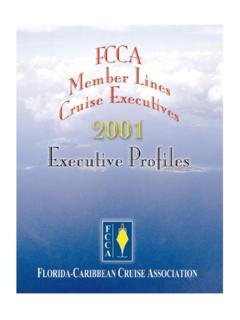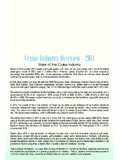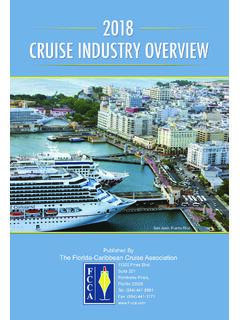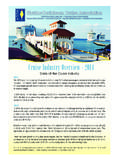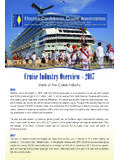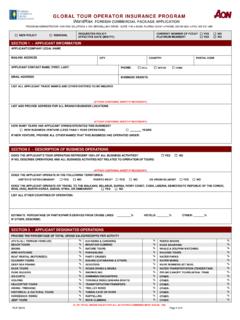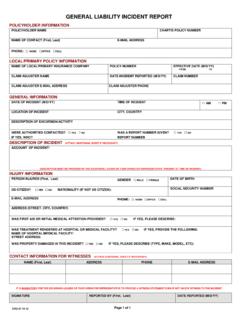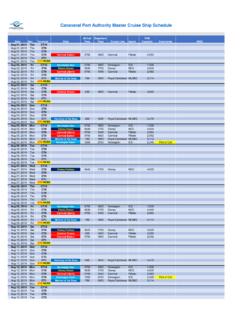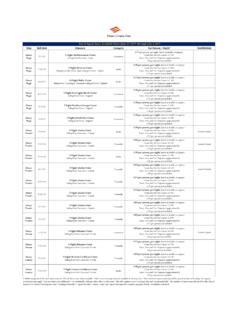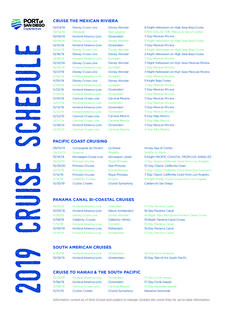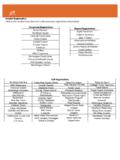Transcription of Cruise Industry Overview and Statistics
1 Cruise Industry Overview - 2017. State of the Cruise Industry 2016. Another record was broken in 2016, with million passengers cruising globally a four percent increase over 2015's previous high of million with 12 million sourced from North America. Coupled with an annu- al occupancy percentage again exceeding 100 percent, this passenger growth shows sustained consumer inter- est in cruising and an Industry where demand continues to outpace supply. To support the growing capacity and source markets, FCCA/CLIA member Cruise lines added more than 23,000 lower berths by releasing nine inno- vative, feature-rich ocean-going vessels in 2016, while enhancing demand by adding new features and increas- ing penetration in international source markets.
2 The year was also marked by continued global growth, but the Caribbean again headlined the Industry 's suc- cess. It accounted for more than a third ( percent) of the global deployment capacity market share. Plus, the strength of the North American market and economy led to higher ticket prices and yields for Caribbean cruises . 2017. This year is poised to reach new heights and break more records, with a forecast of million sailing the oceans on FCCA and/or CLIA Member Lines a five percent increase over 2015. Driven by six new ocean-going vessels with nearly 22,000 lower berths and an investment of $ billion launching in 2017, the record passen- gers will have the world as their gangway, with nearly 1,000 ports around the globe and expansion in markets like Asia and Australia.
3 Region 2016 Deployed Capacity Share Caribbean/Bahamas Mediterranean Europe w/o Mediterranean Asia Australia/New Zealand/S. Pac Alaska South America Other Markets Today's ships offer a world of innovations that build Cruise lines' brands from sky-diving simulators and robot- ic bartenders to celebrity chef kitchens and all-suite staterooms and facilities that accommodate family mem- bers of all generations traveling together or even passengers cruising solo. Cruise ships' facilities and services continue to exceed the expectations of a growing population of travelers, and cruisers can easily find a Cruise line, ship, stateroom and itinerary to suit them.
4 Note: Data provided by CLIA. 2017 forecast based upon historical relationship between yearly capacity increase and yearly passenger increase. New vessels and capacity deployment as identified through September 2016. New ship announcements, vessel retirements and quarterly passen- ger reporting will affect these figures. Cruise Industry Overview In 2016, a record million passengers cruised globally. The Industry estimates that million will Cruise globally in 2017. $117 billion in total economic impact and 956,597 jobs paying $38 billion in wages and salaries were generated by the global Cruise Industry in 2015.
5 The Cruise Industry is the fastest-growing category in the leisure travel market. Since 1980, the Industry has experienced an average annual passenger growth rate of approximately 7% per annum. Demand for cruising increased 62% between 2005 and 2015. The Cruise Industry is the fastest-growing category in the leisure travel market. Since 1980, the Industry has experienced an average annual passenger growth rate of approximately 7% per annum. From a capacity standpoint, utilization is consistently over 100%. Eight out of 10 CLIA-certified travel agents expect increased Cruise sales in 2017.
6 Throughout its history, the Cruise Industry has responded to vacation desires of its guests and embraced innovation to develop new destinations, new ship designs, new and diverse onboard amenities, facilities and services, plus wide-ranging shore side activities. Cruise lines have also offered their guests new Cruise themes and voyage lengths to meet the changing vacation patterns of today's travelers. The Cruise Industry 's establishment of over 30 North American embarkation ports provides consumers with unprecedented convenience, cost savings and value by placing Cruise ships within driving distance of 75% of North American vacationers.
7 By providing significant cost savings through the convenience of avoiding air travel, the new homeports have introduced leisure cruising to a wider customer base. The current Cruise ship order book from 2017-2023 includes 42 new ocean-going vessels from FCCA. Member Lines, with more than 165,000 lower berths and an investment value of more than $36 billion Member Lines, with more than 140,000 berths and an investment value of approximately $31 billion. Note: Data provided by CLIA. 2017 forecast based upon historical relationship between yearly capacity increase and yearly pas- senger increase.
8 New vessels and capacity deployment as identified through September 2016. New ship announcements, vessel retirements and quarterly passenger reporting will affect these figures. Economic Impact of Cruise Industry on Destinations Highlights of the Business Research & Economic Advisors (BREA) 2015 study Economic Contribution of Cruise Tourism to the Destination Economies* include: Cruise tourism contributed $ billion of direct expenditures in the participating 35 destinations for the 2014-2015 Cruise year. Cruise -related expenditures generated 75,050 jobs, which paid $ million in wage income to residents.
9 Million passengers and million crew disembarked Cruise ships and visited the participating destinations during the 2014-2015 Cruise year, spending $ billion and $ million, respectively. Average expenditure per passenger across all destinations was $ , and average expenditure per crewmember was $ The highest expenditure per passenger was $ in St. Maarten, and the highest expenditure per crewmember was $ in Puerto Rico. Cruise line expenditures including port fees and taxes, payments to local tour operators and payments to local businesses for supplies and services contributed $ million.
10 Based on these average numbers, a single call from a mid-sized ship (130,000 GRT, carrying 3,000. passengers and 1,250 crewmembers) generates $311,490 in passenger spending, $83,875 in crew spending and roughly $110,000 in Cruise line expenditures: a total of $505,365, not including employee wages and indirect contributions. Cruise passengers spent an average of hours ashore during their Cruise call. It is clear that the Cruise Industry 's economic impact in the Caribbean and Latin American is significant and continues to grow. The Member Lines of the FCCA urge you to carefully analyze all of the study's informa- tion and see how the Cruise Industry positively impacts your destination's economy.
